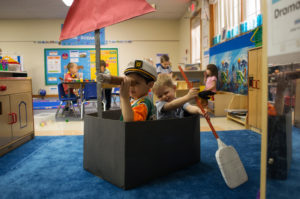 Children today are more scheduled than ever before. Their days are filled with activities such as camp, sports, dance classes and music lessons. When there is nothing else scheduled to do, many children find it challenging to fill up their spare time.
Children today are more scheduled than ever before. Their days are filled with activities such as camp, sports, dance classes and music lessons. When there is nothing else scheduled to do, many children find it challenging to fill up their spare time.
This summer, you’ve probably heard your child say “I’m bored” at least once. You may have responded by giving her a game, turning on a movie, or taking a trip to the park. Although you meant well, frequently guiding your child from one activity to the next can actually be counter-productive.
Below are three ways you can manage boredom at home.
Evaluate the situation. The word “bored” means different things to different children. Some children might be bored because they need activity suggestions. Instead of providing a solution right away, ask your child “What could you do that would not be so boring?” This enables children to build deductive reasoning skills and think of a solution on their own. Younger children might be bored because they crave attention or a social companion. Invite your child to help you cook dinner, feed pets, water the garden or put away groceries.
Suggest a wacky solution. Sometimes children need an out-of-the-box suggestion to fill their time. You can do this by saying, “Why don’t you make up a song about a crazy ostrich dancing in the rain?” or “Why don’t you build a castle only using items that are red?” While the child may not take the wacky suggestion, it’s often enough to get her to think of her own creative solution.
Read books with your child. While it’s not something that your child is doing independently, shared reading experiences are great ways to spark her imagination and creativity. Read the book Not a Box by Antoinette Portis with your child. The book tells the story of a rabbit who uses his imagination to transform a cardboard box into anything he wants, including a rocket, robot and racecar. When you’re finished reading, give your child her own cardboard box and let her imagination run wild. Other fun books that focus on imaginative play include The Most Magnificent Thing by Ashley Spires, Harold and the Purple Crayon by Crockett Johnson and Lines that Wiggle by Candace Whitman.
Our classrooms give students the opportunity to visit centers, and decide the activities that they’d like to explore. This unstructured time encourages children to engage with their classmates, to be creative, and to establish important self-regulation skills. By fostering creativity and imaginative thinking in the preschool years, children will be better able to structure their time and problem solve on their own as they enter elementary school.
– Lauren Starnes, PhD – Director of Early Childhood Education

How to Handle “I’m Bored”
How to Handle “I’m Bored”
This summer, you’ve probably heard your child say “I’m bored” at least once. You may have responded by giving her a game, turning on a movie, or taking a trip to the park. Although you meant well, frequently guiding your child from one activity to the next can actually be counter-productive.
Below are three ways you can manage boredom at home.
Evaluate the situation. The word “bored” means different things to different children. Some children might be bored because they need activity suggestions. Instead of providing a solution right away, ask your child “What could you do that would not be so boring?” This enables children to build deductive reasoning skills and think of a solution on their own. Younger children might be bored because they crave attention or a social companion. Invite your child to help you cook dinner, feed pets, water the garden or put away groceries.
Suggest a wacky solution. Sometimes children need an out-of-the-box suggestion to fill their time. You can do this by saying, “Why don’t you make up a song about a crazy ostrich dancing in the rain?” or “Why don’t you build a castle only using items that are red?” While the child may not take the wacky suggestion, it’s often enough to get her to think of her own creative solution.
Read books with your child. While it’s not something that your child is doing independently, shared reading experiences are great ways to spark her imagination and creativity. Read the book Not a Box by Antoinette Portis with your child. The book tells the story of a rabbit who uses his imagination to transform a cardboard box into anything he wants, including a rocket, robot and racecar. When you’re finished reading, give your child her own cardboard box and let her imagination run wild. Other fun books that focus on imaginative play include The Most Magnificent Thing by Ashley Spires, Harold and the Purple Crayon by Crockett Johnson and Lines that Wiggle by Candace Whitman.
Our classrooms give students the opportunity to visit centers, and decide the activities that they’d like to explore. This unstructured time encourages children to engage with their classmates, to be creative, and to establish important self-regulation skills. By fostering creativity and imaginative thinking in the preschool years, children will be better able to structure their time and problem solve on their own as they enter elementary school.
– Lauren Starnes, PhD – Director of Early Childhood Education